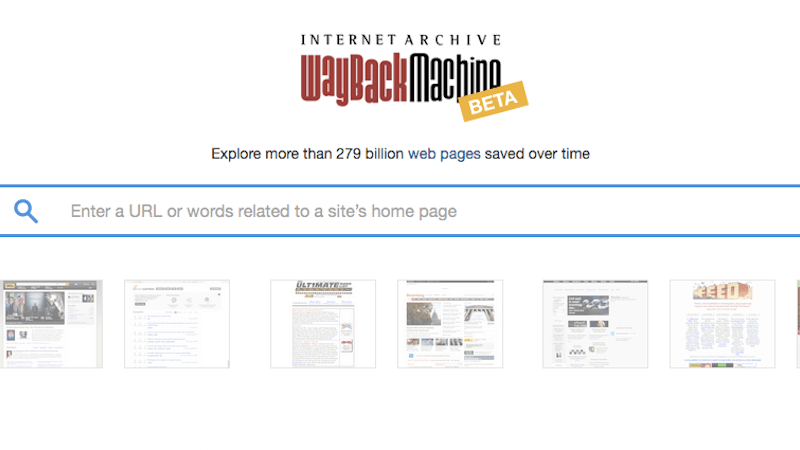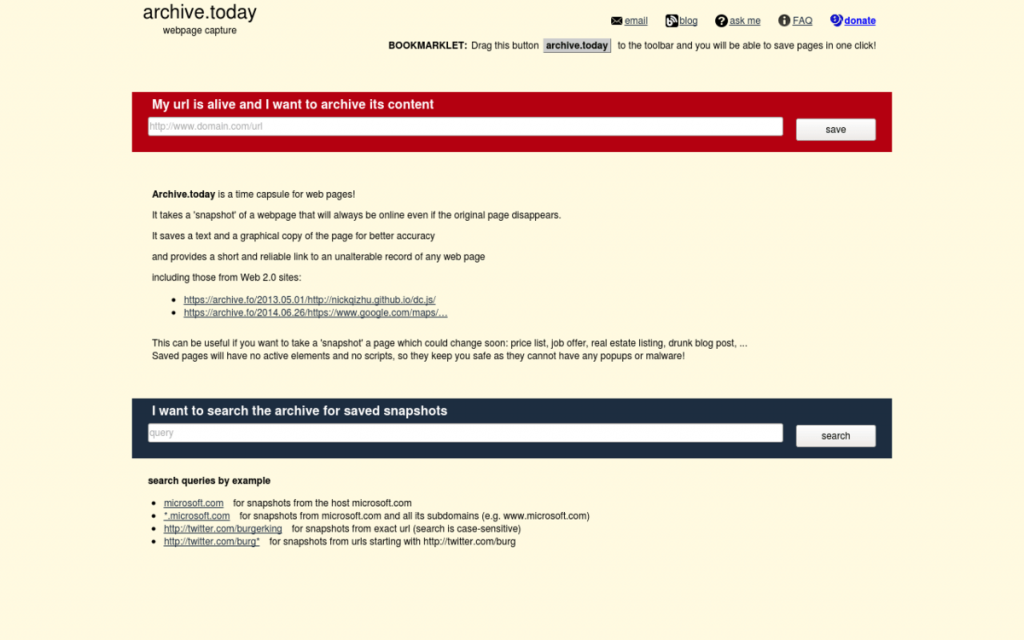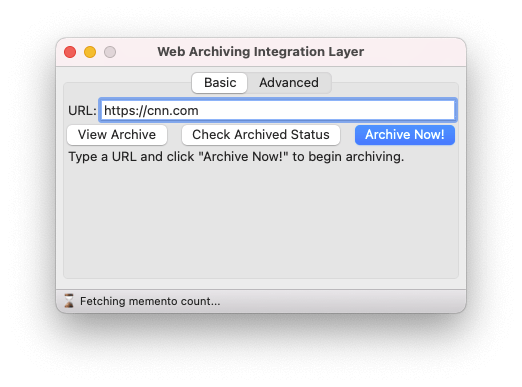A Guide to Internet Archive Sites and Tools:
There are plenty of internet archive sites and tools available to archive a website. We will explore some of the popular ones to see which one suits your needs. Here are some;
Let’s discuss different internet archiving sites and tools in detail.
Wayback Machine:
Wayback Machine is the first of its kind. It is a benchmark for other archiving tools and sites.
Wayback machine is a server-side archive solution. There are many ways to create and upload an archive. It is usually the first place to look while archiving a site. A dedicated API is also available to hook into its functionality.
Wayback Machine might not be able to preserve all the functionality of a site. This is because of the mechanism of its crawl and archive method of websites. Anyhow it is considered a standard benchmark for web archivists. It is free to boot.
Archive.today:
Archive. today is also an exciting free service. It is similar to the Wayback Machine in many ways, even in design but its approach to archive a website is different from Wayback Machine. The data servers of the archive. today are based in Europe.
Archive. today is not based on the crawlers running over the web. One sends with consent the URL of his site for inclusion in the archive. There is no robust deletion policy in this service. It excludes certain media and file types.
As it is free, it is more suitable if anyone wants a complimentary place to store the archive of his site. One of the awesome features is that it has search functionality to find previously internet archive sites.
Heritrix:
Internet Archive offers a few other archiving products aside from Wayback Machine. One of these is Heritrix. It is an open-source tool that was built in collaboration with Internet Archive sites and Nordic libraries.
Rather than a full-featured archiving tool, it’s a web crawler. All the crawled results can be packaged together through Heritrix.
Wayback Machine now uses Heritrix to crawl a site for the inclusion of that particular site on its own site. Heritrix is also used by a large number of libraries and institutions to build archives.
It has very impressive features but to install Heritrix, you must have some technical knowledge. To install it, there is not a user-friendly interface. You must have knowledge of Git, Github, and the command line.
Like other famous solutions, it is free to use. It is suitable for a cost-effective self-archiving solution.
WAIL – Web Archiving Integration Layer:
If you are going to use Heritrix to archive your site, but you are not having the required technical knowledge to simply install software, a potential solution is available for you.
WAIL is an open-source and free cross-platform desktop app that is having a functional Graphical User Interface, an installer is along with.
Heritrix is WAIL’s crawling engine. You can leverage the power of Heritrix while not having to traverse the command line and Github. Apart from this, WAIL uses the OpenWayback engine to replay web archives.
Stillio:
Stillio is an archiving tool; billed as an automated solution. It takes snapshots at set intervals. Stillio is a paid service and looks different from other archiving solutions.
It gives you an option to create an archive that exactly meets your requirements. You can add tags, titles, etc. to your URLs. You can also save your archives into Dropbox, Google Drive, and other third-party services like these.
One of the main drawbacks of Stillio is that it doesn’t support back-end archiving of your site. You are restricted to only snapshots of your site. There is no option for a full archive of data.
Stillio may be useful in certain cases like serving as brand management and tracking tool. For better SEO results and other such stuff; you can take screenshots of your competitors’ sites. For verification of content, it is also great.
As Stillio is a paid service, it starts at $29/month. The maximum price of it is $299. When there are free alternatives available, it is a huge amount for anyone to spend. It all depends on the need of your business.
Pagefreezer:
Pagefreezer is an automated tool to offer web archiving services. It has many same benefits as Stillio. But it is far better than Stillio as it also archives content from social media, text messages, full sites, and enterprise-level collaboration platforms.
Apparently, Pagefreezer looks better solution than Stillio as it has greater value in various use cases.
When you require a site with back-end functionality, Pagefreezer is the best solution. You can automate the number of snapshots. You can review these snapshots using the comparison tool and site archive browser.
In nutshell, Pagefreezer is a better enterprise-level solution for archiving a site.






